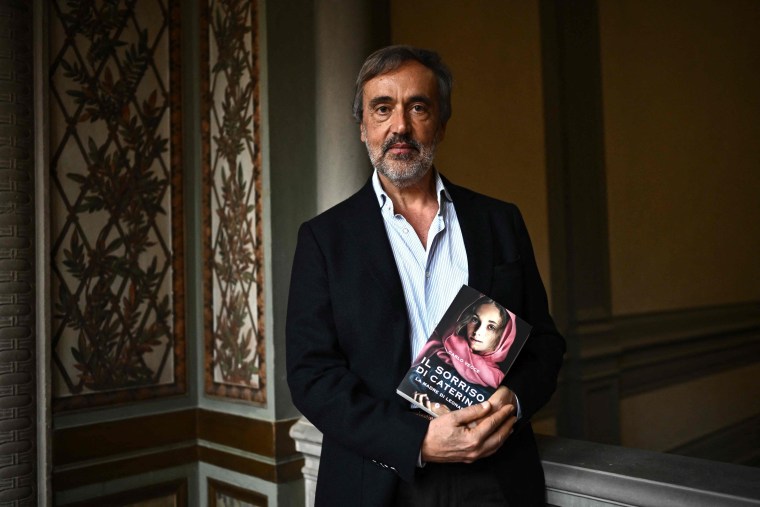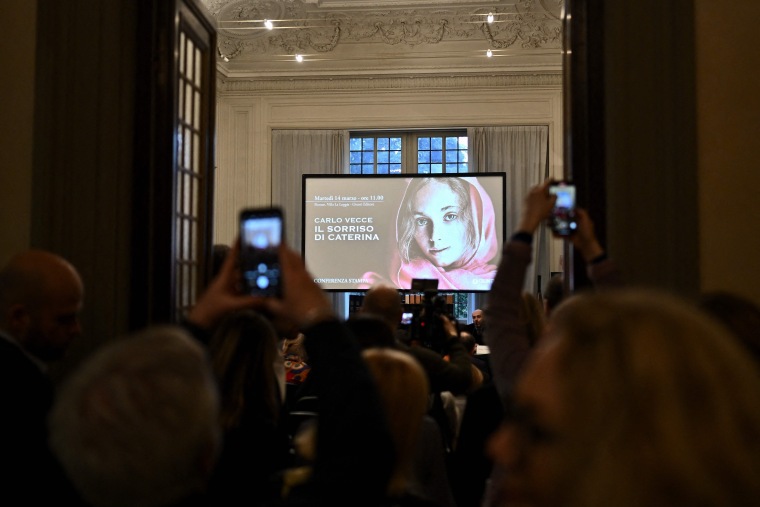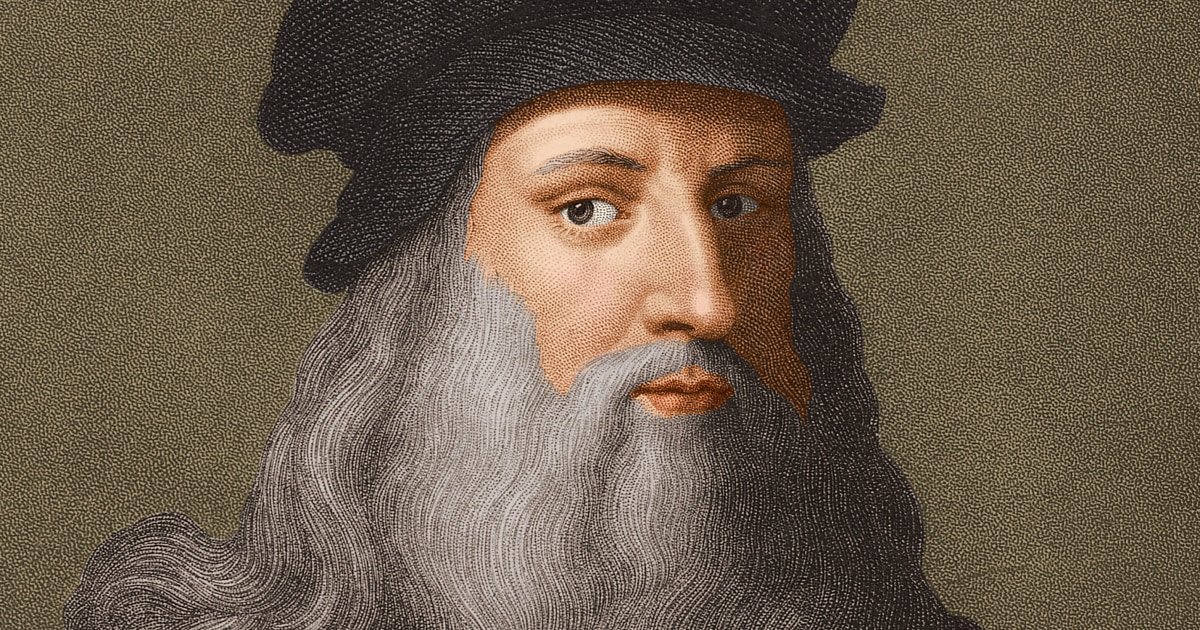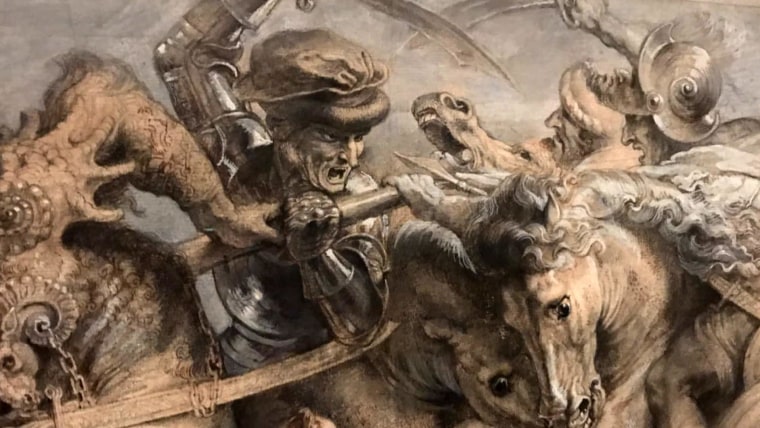ROME — Leonardo da Vinci may be one of the most studied humans in history. And yet, one crucial detail about the Renaissance master remains a mystery: Who was his mother?
Now new research claims to have an answer.
Da Vinci, the painter of the «Mona Lisa» and a symbol of Italian culture, was in fact half Italian, according to the theory revealed Tuesday, with his Caucasian slave mother.
The research was presented at a news conference in Florence by Carlo Vecce, a scholar of Leonardo’s life and work, whose evidence will add new fuel to the fierce historical debate.
‘I could not believe what I was watching’
For centuries, while millions around the world admired his art and experts pored over his groundbreaking work in science, engineering and beyond, the exact identity of Leonardo’s mother has been the subject of intense scrutiny and speculation.
Some details were widely agreed upon: her name was Caterina, and Leonardo was born in 1452 as the illegitimate product of her relationship with her father, a young Florentine notary named Ser Piero da Vinci.
Beyond that, theories abound.
Some scholars suggested that Leonardo’s mother was a peasant, others an orphan and a slave from the Middle East or North Africa. Now Vecce, one of a small group of Leonardo experts, says the evidence shows that she was a Circassian slave torn from the North Caucasus region that is now part of southern Russia, near the Black Sea coast.
The «smoking gun» among the previously unknown documents that Vecce claims to have found in the Florence State Archives is an act of freeing a slave named Caterina by her lover, Monna Ginevra, who was the wife of a «Florentine adventurer» who owned slaves from the Black Sea region.
The document was written by Ser Piero da Vinci, Leonardo’s father, and dated November 1452, when Leonardo would be six months old.
«When I saw that document I couldn’t believe my eyes,» Vecce told NBC News. “I never gave much credence to the theory that she was a foreign slave. So, I spent months trying to prove that the Caterina in that notarial deed was not Leonardo’s mother, but in the end all the documents I found pointed in that direction and I surrendered to the evidence.»
“At that time, many slaves were called Caterina, but this was the only act of freeing a slave named Caterina that Ser Piero wrote in his entire long career,” Vecce said. «In addition, the document is full of small errors and oversights, a sign that he may have been nervous when he wrote it, because getting another’s slave pregnant was a crime.»

The findings are the basis of a new historical novel by Vecce called «Il Sorriso di Caterina» (Caterina’s Smile). According to Giunti, the book’s publisher, Black Sea slavery in the 15th century was a lucrative business for merchants from the powerful maritime republics of Venice and Genoa.
“In Florence, the market demanded above all young women, destined to serve as servants, caretakers and concubines, sexual slaves who, if they became pregnant, continued to be useful even after giving birth, providing their milk for the master’s children”. says. she said in a press release.
If da Vinci’s heritage were only half Italian, as research suggests, it would add a new layer to Leonardo’s rich legacy.
The Circassians are a predominantly Muslim ethnic group that lived in the North Caucasus until the 19th century, when more than a million people were forced to flee their homeland after Tsarist Russia invaded the area.
Circassians now live in nearly 40 different countries around the world, including Turkey, Israel, Syria, Jordan, and the United States.
«Of one thing we can be sure,» according to a news release accompanying Tuesday’s investigation into Leonardo’s mystery mother. «She is the one who transmitted respect and veneration for life and nature, and an inexhaustible desire for freedom.»

To this day, one of the most highly regarded theories about da Vinci’s mother came from Martin Kemp, another Leonardo expert and a former Professor of Art History at Oxford University in England.
In a 2017 book, Kemp concluded that Leonardo’s mother was Caterina di Meo Lippi, an orphan who lived in a farmhouse a mile from Vinci, the Tuscan town where Leonardo was born and from which he derives his name.
From the documents he found in the Vinci file, Kemp concluded that Caterina and her little brother moved into their grandmother’s house near Vinci after their parents died. Soon after, according to her theory, the former orphan became pregnant by 25-year-old Ser Piero da Vinci during one of his visits to his hometown in July 1451.
“Carlo Vecce is a great scholar. The ‘dummy him’ account of him needs the feel of a slave mother,” Kemp said in an interview Tuesday. «I still prefer our ‘rural’ mother, who is a better fit, especially as the future wife of a local ‘farmer’,» he said.
«But a no-nonsense story is at odds with the popular need for a tabloid story in tune with today’s obsession with slavery.»
Still, at the end of the day, Kemp cautions, «None of the stories are demonstrably proven.»


